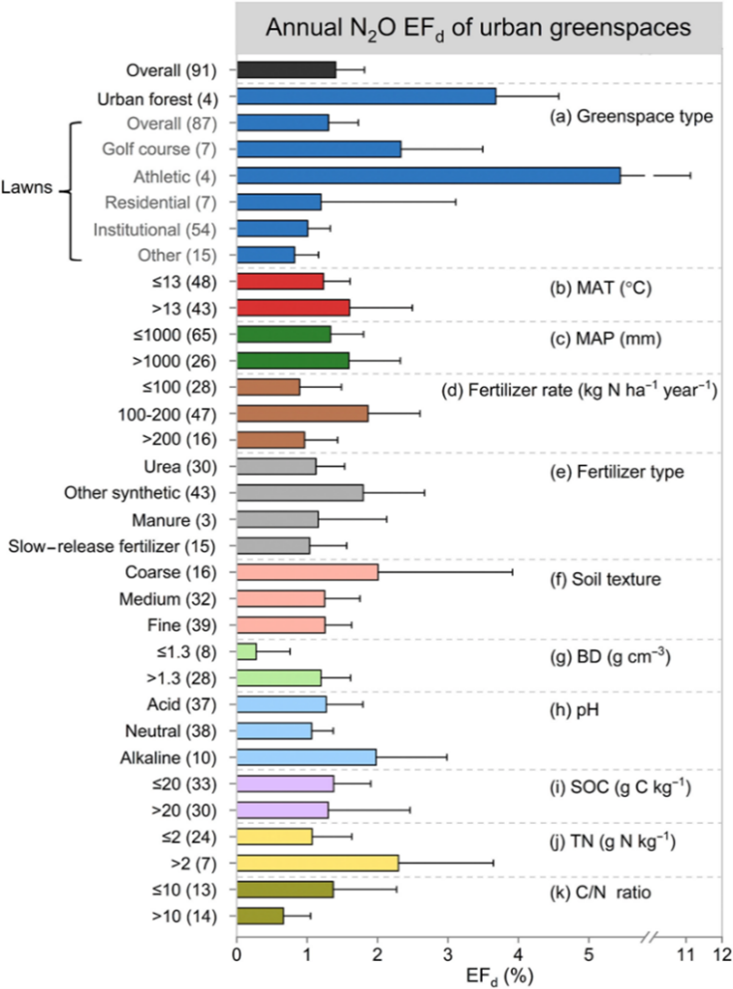Global Chang Biology | March 2023
A study conducted by the Chinese Academy of Sciences and City University of New York investigated the impact of urbanization-induced land-use change on carbon (C) and nitrogen (N) cycles, as well as greenhouse gas (GHG) emissions. Through a comprehensive meta-analysis, the researchers assessed the effects of urbanization on soil nitrous oxide (N2O) and methane (CH4) fluxes, quantified N2O emission factors in fertilized urban soils, and identified key drivers of flux changes associated with urbanization.
The findings revealed that urbanization increases soil N2O emissions by 153%, reaching 3.0 kg N per hectare per year, while soil CH4 uptake rates decrease by 50%, to 2.0 kg C per hectare per year. Globally, the conversion of land to urban greenspaces has led to a significant increase in soil N2O emissions (0.46 Tg N2O-N per year) and a reduction in soil CH4 uptake (0.58 Tg CH4-C per year). The study also identified factors such as changes in soil properties, increased temperature, and management practices (particularly fertilizer use) as key drivers of these effects.
To mitigate these impacts, the researchers suggest avoiding soil compaction, reducing lawn fertilization, and restoring native ecosystems in urban landscapes. By implementing these strategies, the study indicates that the negative effects of urbanization on soil N2O emissions and CH4 uptake can be mitigated, contributing to more sustainable urban environments.






